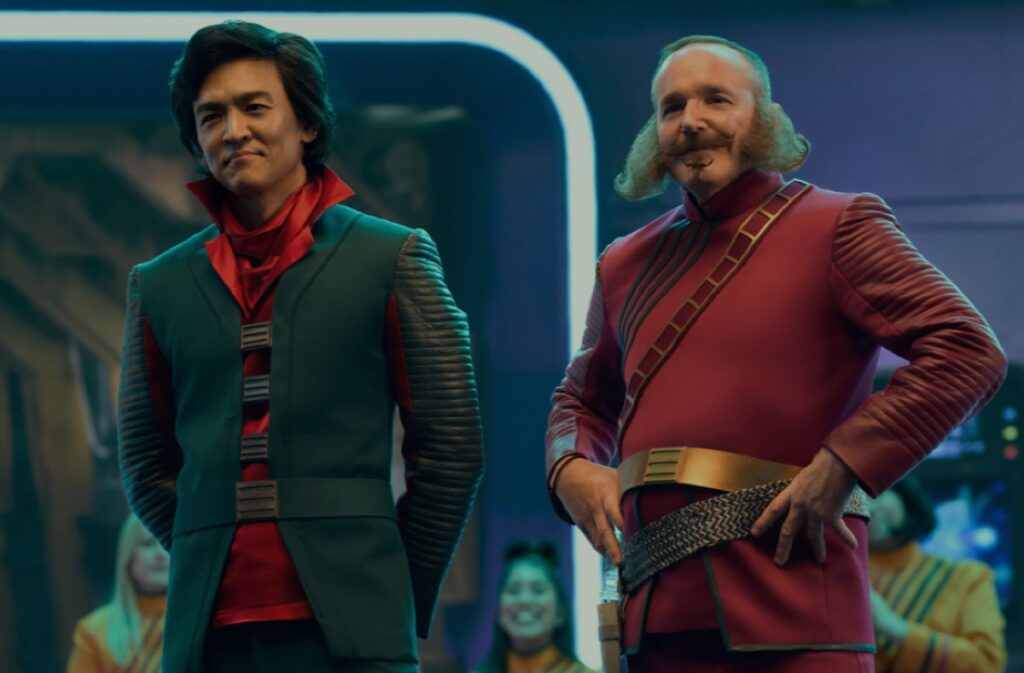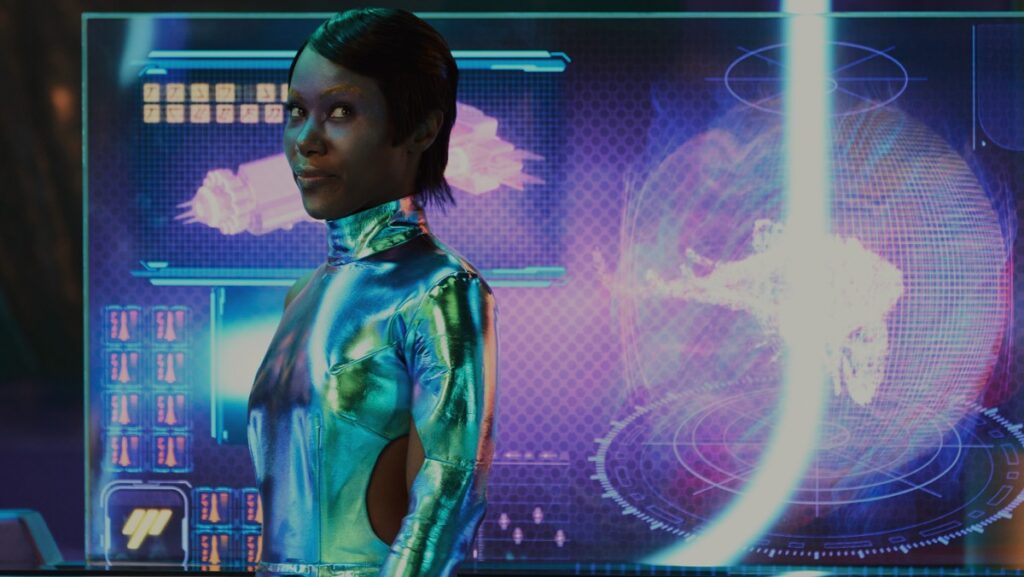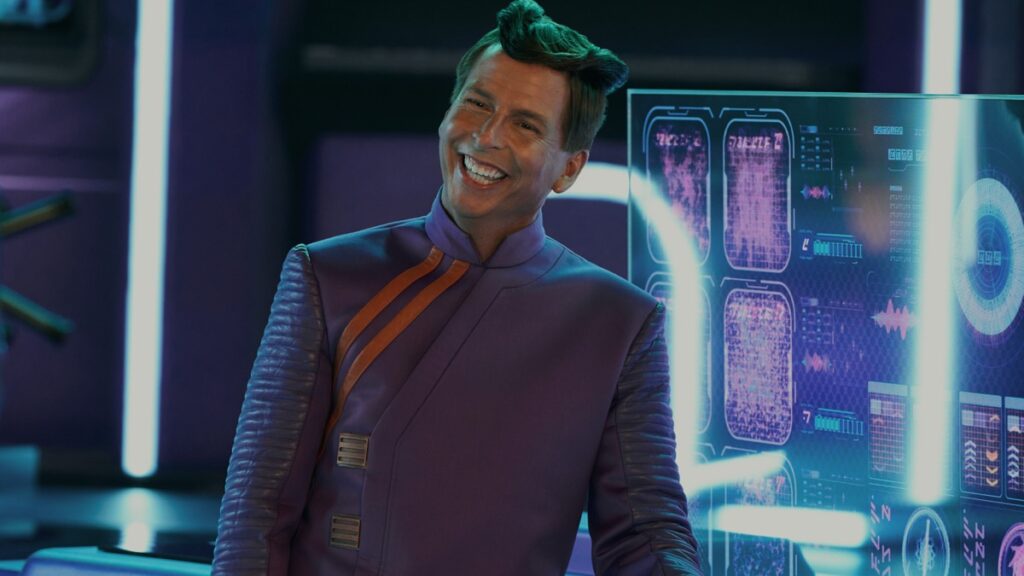Paul Weitz: Weirdly, you can state some things that you wouldn’t necessarily in a real show when DeWanda Wise’s character, who’s a navigation bot, says, “I’m a navigation unit, not a sex bot.” I’m sure there are many people who have felt like that. Also, to delineate it visually, the actors were in a gigantic stage with pre-made visuals around them, whereas most of the stuff [for Murderbot] was practical things that had been built.
Apple TV+
This is Murderbot’s favorite TV show.
Apple TV+

Apple TV+
John Cho and Clark Gregg cameo as “Captain” and “Lieutenant,” respectively.
Apple TV+
This is Murderbot’s favorite TV show.
Apple TV+
John Cho and Clark Gregg cameo as “Captain” and “Lieutenant,” respectively.
Apple TV+

Apple TV+
DeWanda Wise plays a navigation unit in the fictional series-within-a-series.
Apple TV+

Apple TV+
Jack McBrayer is a crew member in the fictional show-within-a-show.
Apple TV+
DeWanda Wise plays a navigation unit in the fictional series-within-a-series.
Apple TV+
Jack McBrayer is a crew member in the fictional show-within-a-show.
Apple TV+
Ars Technica: In your series, Murderbot is basically a Ken doll with no genitals. The book only mentioned that Murderbot has no interest in sex. But the question of what’s under the hood, so to speak, is an obvious one that one character in particular rather obsesses over.
Chris Weitz: It’s not really addressed in the book, but certainly, Murderbot, in this show as well, has absolutely no interest in romance or sex or love. This was a personable way to point it out. There was a question of, once you’ve got Alexander in this role, hasn’t anybody noticed what it looks like? And also, the sort of exploitation that bot constructs are subjected to in this world that Martha has created meant that someone was probably going to treat it like an object at some point.
Paul Weitz: I also think, both of us having kids, you get a little more exposed to ways of thinking that imply that the way that we were brought up thinking of romance and sexuality and gender is not all there is to it and that, possibly, in the future, it’s not going to be so strange, this idea that one can be either asexual or—
Chris Weitz: A-romantic. I think that Murderbot, among neurodivergent communities and a-romantic, asexual communities, it’s a character that people feel they can identify with—even people who have social anxiety like myself or people who think that human beings can be annoying, which is pretty much everyone at some point or another.
Ars Technica: It’s interesting you mentioned neurodivergence. I would hesitate to draw a direct comparison because it’s a huge spectrum, but there are elements of Murderbot that seem to echo autistic traits to some degree.
Paul Weitz: People look at something like the autism spectrum, and they inadvertently erase the individuality of people who might be on that spectrum because everybody has a very particular experience of life. Martha Wells has been quoted as saying that in writing Murderbot, she realized that there are certain aspects of herself that might be neurodivergent. So that kind of gives one license to discuss the character in a certain way.


